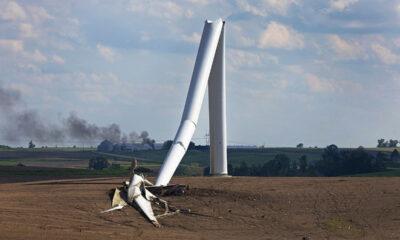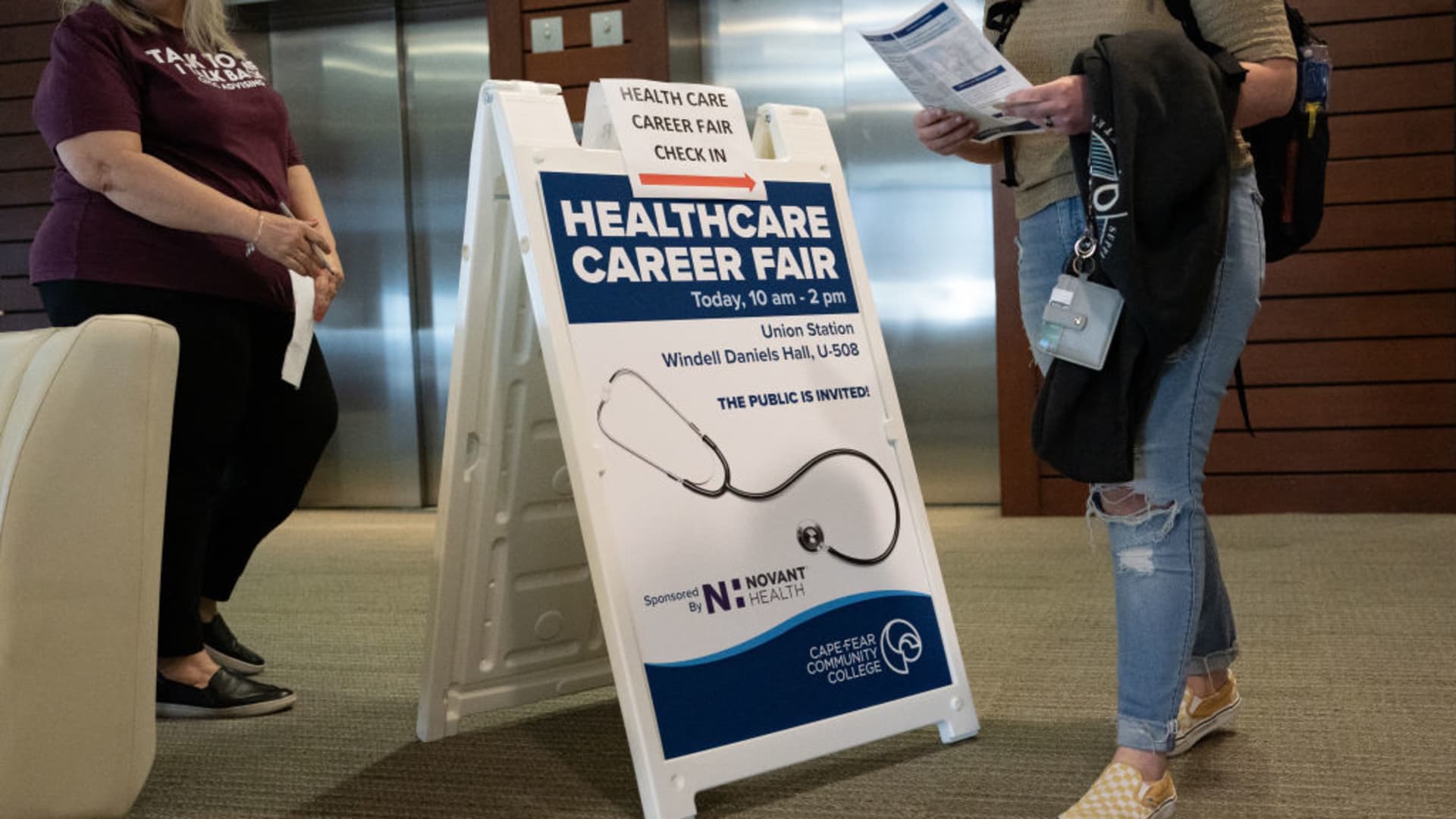A sign for a health-care career fair at Cape Fear Community College in Wilmington, North Carolina, on Feb. 28, 2023.
Allison Joyce | Bloomberg | Getty Images
The unemployment rate fell for Asian Americans from June to July, bucking a broader trend, according to data released Friday by the U.S. Bureau of Labor Statistics.
The unemployment rate among Asian Americans dipped to 3.7% in July from 4.1% a month earlier. The result went against the overall unemployment rate, which rose to 4.3% last month from 4.1% in June.
Meanwhile, the jobless rate for white Americans rose to 3.8% in July, up from 3.5% a month earlier. For Hispanic Americans, this number climbed to 5.3% last month, compared to the rate of 4.9% in June. The jobless rate held steady at 6.3% for Black workers.
When taking gender into account, the unemployment rate declined for Black women, who saw their jobless rate tick down to 5.5% in July, compared to 5.7% a month earlier. For Black men, this number jumped to 6.6% last month, up from 6.1% in June.
July’s jobless rates rose to 3.5% from 3.2% for white men, while increasing to 3.4% last month from 3.1% for white women. The rate similarly increased to 4.4% last month from 4.2% for Hispanic males, and it jumped to 5.4% in July from 4.5% for Hispanic female workers.
Jobless rates for Asian workers based on gender were not readily available.
But Elise Gould, senior economist at the Economic Policy Institute, stressed that these numbers include a lot of volatility — especially for the smaller population groups — and cautioned against reading too much into the trends.
In fact, Gould emphasized that while the overall unemployment rate rose last month, the labor market was still strong for the prime-age employment group, or for workers ages 25 to 54. The employment rate for this age cohort was 80.9% in July, the economist said. Gould added that female workers in this group continue to recover.
“More people came back into the labor force. Many of them did not find jobs, and that’s why the unemployment rate ticked up,” Gould told CNBC in an interview. “But when you look at the flip side, things are definitely stronger.”
Last month, the overall labor force participation rate increased to 62.7% in July, up from 62.6% in the prior month. This measure represents the percentage of the population that is either currently employed or actively seeking employment.
For white workers, the labor force participation rate ticked higher to 62.3% last month, compared to June’s rate of 62.2%. The rate rose to 63.2% in July, versus the previous month’s level of 62.7% for Black Americans.
For Hispanic workers, the labor force participation rate came in at 67.3% in July, slightly lower than the prior month’s reading of 67.5%. Meanwhile, this rate among Asians was 65.7% last month, versus 65.9% in June.
— CNBC’s Gabriel Cortes contributed to this report.

 Accounting1 week ago
Accounting1 week ago
 Economics1 week ago
Economics1 week ago
 Personal Finance1 week ago
Personal Finance1 week ago
 Accounting1 week ago
Accounting1 week ago
 Finance7 days ago
Finance7 days ago
 Economics1 week ago
Economics1 week ago
 Economics1 week ago
Economics1 week ago
 Economics1 week ago
Economics1 week ago





















